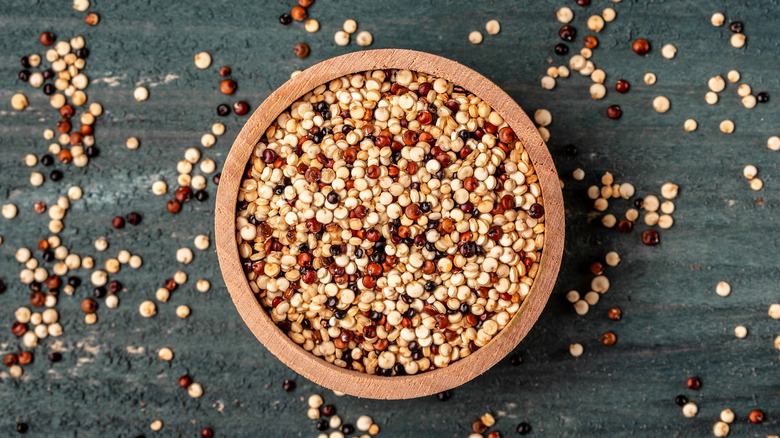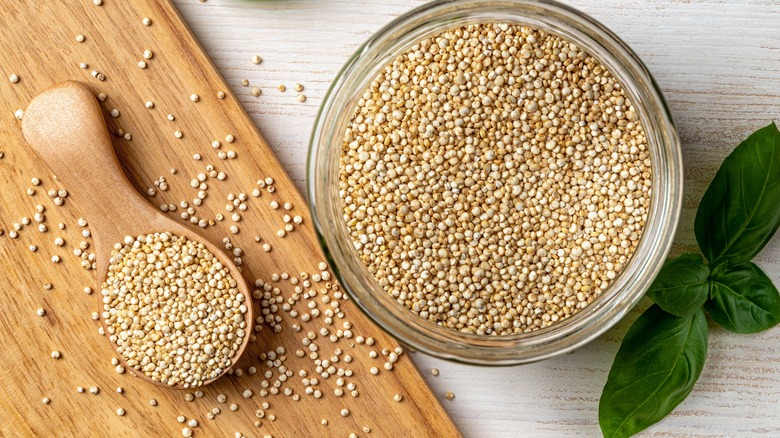This Country Produces The Most Quinoa
Though technically a seed, protein-packed quinoa is most commonly thought of as a cereal or grain and has earned a reputation as a gluten-free superfood that adds beneficial fatty acids and fiber to dishes (via Bioeco Actual). While over 100 different kinds of quinoa varieties are grown, the types most commonly stocked on grocery store shelves are the red, black, and white grains that can either be found ground into health-supporting flour or packaged as small, round morsels ready to cook (per Medical News Today).
When properly prepared, Healthify Me describes quinoa as fluffy and soft with a nutty flavor profile. For those wanting to enhance recipes with a nutritional boost, quinoa's versatility lends itself to a range of dishes. From satisfying veggie burgers to healthy Thai salads, snack-worthy almond energy bars and rich chocolate chip cookies, it comes as no surprise that there's worldwide demand for this tiny yet mighty ingredient.
A super grain from the Andes
Native to South America, quinoa is a hardy plant that can survive in cooler environments (per World Atlas). Because the crops are durable and study, high-altitude climates and strong winds pose no threats. Once regarded as a sacred grain, quinoa has grown for over 6,000 years in the area, and was planted by Andean cultures with ceremonies involving gold (via SA Expeditions).
According to Bioeco Actual, South America continues to lead worldwide production, with Bolivia and Peru responsible for up to 90% of the product and sending most of it to the United States. In 2020, Peru accounted for over 57% of the global quinoa market, as reported by Tridge, followed by 40% packaged in Bolivia.
While it can take some time getting used to making perfect quinoa, once you've mastered the basic steps — rinsing, salting, steaming, and fluffing — this nutritional powerhouse can turn up both the nutritional and flavor profile of your snacks and meals.

